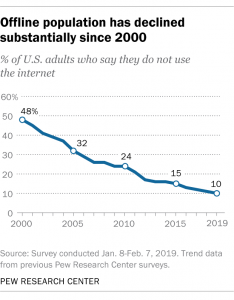This website uses cookies so that we can provide you with the best user experience possible. Cookie information is stored in your browser and performs functions such as recognising you when you return to our website and helping our team to understand which sections of the website you find most interesting and useful.

Websites and Online Documents Provide Key Information for Living
How many times a day do you consult an online source for information? We all shop, obtain news, conduct our banking, and communicate via email and instant messages. We use social media, research doctors, restaurants, and service providers online. We look up facts, book travel, and enjoy entertainment online. We search and apply for jobs, even obtain education online, or using digital information. Nearly 90% of US citizens use the internet daily. Imagine having no access to any of those online or digital sources of information. For people who are blind or have low vision, Braille and accessibility are the keys to accessing digital information.
The continued development of the internet and other online resources has made information more available to individuals than ever before, but access to information is still one of the leading barriers to people who are blind or have low vision. Assistive technology such as screen readers and connected Braille displays are the two primary means by which people who are blind or have low vision access the internet. If websites or online documents are not made accessible, assistive technology cannot properly convey the information to their users, effectively shuttings such users of assistive technology out of the information superhighway.
Information is a Basic Human Right
Information has been classified as a basic human right, and in many countries, a civil right. The United Nations has agreed upon a Universal Declaration of Human Rights which includes the right to access “information held by public bodies.” The UN has also spelled out that this must include people with disabilities. They request that Braille, sign language, and other forms of communication be accepted and facilitated.
Braille means Literacy for People Who are Blind
While many people who are blind use screen readers to access information online by listening to the content on the screen read aloud, screen readers can limit their users by only presenting the information in one sensory format. Because screen readers cannot display letters, spelling, or punctuation, a screen reader user does not come in contact with literacy basics and can be functionally illiterate (not uneducated, but unable to read or write via means of the language symbols used to communicate). Braille is the key to literacy for people who are blind or have low vision. It allows them to absorb spelling and punctuation, and to convey their ideas “in writing.”
There are many different assistive technology tools that allow Braille access to digital information such as websites and digital documents. But all of them require digital information to be accessible in order for the users to gain access to it.
Braille Means Employment
Louisiana Tech University conducted a survey in 2012 that found that people who are blind or have low vision have a much higher chance of obtaining employment if they are able to read Braille. Only 26 percent of people who are blind are employed. The majority of those are Braille readers. Braille reading boosts independence and expands the user’s ability to communicate and obtain information necessary for education and job performance. Additionally, among employed blind and low vision individuals, Braille readers secured higher rates of income.
Without Accessibility, Braille Readers are Denied Opportunity
Without accessible websites and digital documents, people who use assistive technology have no access to information sources. It makes all aspects of daily living more difficult, and some aspects impossible. It lowers their chances of obtaining employment and reduces their earning potential. It’s vital that online information on websites, in digital documents, and digital systems, be made accessible so that people with disabilities are not denied their fundamental human right to information. With Braille and accessibility, people who are blind and have low vision have better employment opportunities, and a better chance at the life we all want.
For more information about digital accessibility, have a look at this article on the Four Pillars of Web Content Accessibility Guidelines.
Tammy Albee
Tammy Albee | Director of Marketing | Equidox Tammy joined Equidox after four years of experience working at the National Federation of the Blind. She firmly maintains that accessibility is about reaching everyone, regardless of ability, and boosting your market share in the process. "Nobody should be barred from accessing information. It's what drives our modern society."

